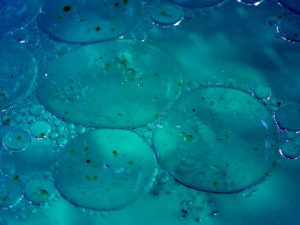Hydrogen South Africa – HySA
NPEP Newsletter, April 2017
 South Africa plays an important role in the ‘Hydrogen Economy’ in an effort to establish clean and reliable alternative energy sources. Hydrogen energy is being considered as one of the most plausible choices for alternative energy and as an energy-carrier, due to the abundance of elemental hydrogen on the planet. The energy within hydrogen can be electrochemically converted directly into electrical energy using fuel cell technology. A major advantage of hydrogen technology is that the only ‘waste’ produced from pure hydrogen is water, which results from the bonding of hydrogen and oxygen atoms. Fuel cells contain several components at the nano scale, such as the platinum group metal (PGM) based catalysts, which assist in the splitting of hydrogen into hydrogen ions and electrons, in one of the steps towards producing electrical energy.
South Africa plays an important role in the ‘Hydrogen Economy’ in an effort to establish clean and reliable alternative energy sources. Hydrogen energy is being considered as one of the most plausible choices for alternative energy and as an energy-carrier, due to the abundance of elemental hydrogen on the planet. The energy within hydrogen can be electrochemically converted directly into electrical energy using fuel cell technology. A major advantage of hydrogen technology is that the only ‘waste’ produced from pure hydrogen is water, which results from the bonding of hydrogen and oxygen atoms. Fuel cells contain several components at the nano scale, such as the platinum group metal (PGM) based catalysts, which assist in the splitting of hydrogen into hydrogen ions and electrons, in one of the steps towards producing electrical energy.
In 2008, South Africa established a research, development and innovation strategy called Hydrogen South Africa (HySA). HySA aims to stimulate and guide innovation along the value chain of hydrogen and fuel cell technologies and ultimately position South Africa to derive local benefits from supplying high value-added products (e.g. PGM catalysts and catalytic devices) to the growing international fuel cells and hydrogen markets. These local benefits include economic benefits through job, wealth and new industries creation, and the development of appropriate skills and human resource capital.
The motivation and driving force for the HySA programme is the prevalence of platinum reserves found in South Africa. Platinum group metals are the key catalytic materials used in most fuel cells and, with more than 75% of the world’s known platinum reserves found within South African borders, there is great potential for socio-economic benefits to be derived from these natural resources. South Africa can harness these benefits through the development of local PGM-based hydrogen and fuel cell technologies.
Speaking at the start of the Centre for Science and Technology of the Non-Aligned and Other Developing Countries’ training programme on Minerals Processing and Beneficiation in January 2017, Minister of Science and Technology, Naledi Pandor, noted that the Department of Science and Technology has established three HySA centres of competence based at various universities and research institutes, focusing on developing materials, components, units and systems for hydrogen generation from renewable energy and electricity generation using fuel cells. She also said that a number of car manufacturers have announced plans to start producing hydrogen-operated vehicles. South Africa’s telecommunications industry is already, in some instances, replacing its diesel generators using hydrogen fuel cells for back-up power. The technology is also being used in hospitals, mines and the military, as fuel cells operate silently, have a low heat transmission making them more stable compared to internal combustion engines, and produce no harmful waste products.
Impala Platinum Holdings (Implats) has funded HySA Systems, one of the three HySA centres of competence, with R6-million to enable the prototype development of hydrogen fuel cell driven material handling and underground mining equipment. Implats have also supported another centre, HySA Catalysis, by supplying platinum for the scale up of the production of South African developed fuel cell catalysts.
Anglo American Platinum, together with the Young Engineers and Scientists of Africa (YESA) group and the South African Agency for Science and Technology Advancement (SAASTA) through HySA Public Awareness, Education and Demonstration Platform (HySA PADEP), developed an educational programme in 2015 that has been rolled out to schools in Cofimvaba, teaching learners about the science of fuel cells. To date, 3 500 learners from grade R to grade 12 at 26 schools in the Eastern Cape have benefited from this programme. Anglo American Platimun have installed fuel cell technology that is being successfully used to provide standby power in some schools in the Eastern Cape. The technology supports energy requirements such as charging stations for tablets, fax machines and computers.
The ultimate goal of the HySA strategy is to enable South Africa to supply 25% of global platinum group metal-based catalyst demand for the hydrogen and fuel cell industry by 2020. While this is would be extremely difficult to accomplish, no matter what percentage of demand it achieves, it demonstrates the strong commitment of the South African government to support the development of the fuel cell sector, based on South African technologies.
6th Annual Gauteng Nanosciences Young Researchers’ Symposium (NYRS-2016)
Greater Solar Energy Harvesting with Nano Electronics
Enabled Nanotechnologies for Energy Harvesting
Nanotechnologies that Mimic Nature
Nanotechnology and Piezoelectricity
Improving Energy Transmission with Nanotechnology
The 9th International Conference of the Kenya Chemical Society (KCS)
8th International Symposium on Nanotechnology and Environmental Health (NanOEH2017)
Nanotech France 2017 International Conference and Exhibition
4th European Crystallography School (ECS4)
The 7th World Annual Congress of Nano Science & Technology – 2017
